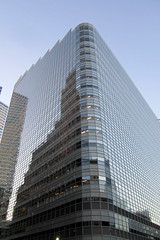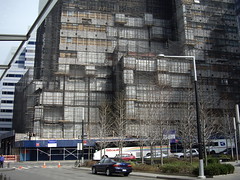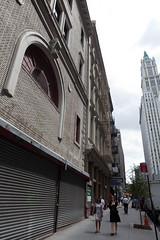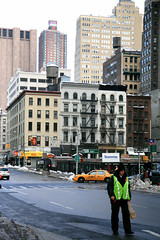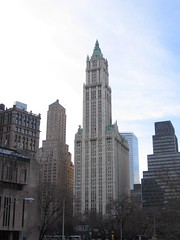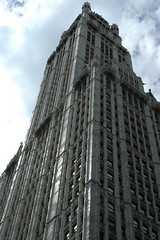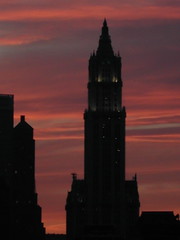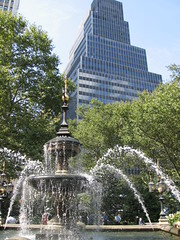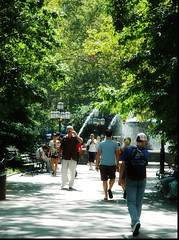
This was originally set aside in 1686 by the Dutch
colonial government as The Commons, a pasture
adjacent to the Collect Pond where townsfolk
could take their livestock to eat and drink.
It soon became the city's main park, serving as a gathering place
for celebrations--and protests.
On August 11, 1766, New Yorkers angry that their Liberty
Pole protest in the park had been taken down, threw bricks
at British soldiers here, who retaliated with
bayonets--resulting in the first (non-fatal) bloodshed of
the Revolutionary era. General George Washington
had the Declaration of Independence read here
on July 9, 1776. In 1826, African-Americans rioted here
against slave-catchers pursuing escapees
from the South. Another riot here in 1837 opposed
the raising of the price of flour from
$6 to $15 a barrel. During the Draft Riots of 1863,
rioters attacked blacks here.
When Albany in 1857 replaced the corrupt
Municipal Police with a new organization known as
the Metropolitan Police, the two forces clashed
here in a
melee that left one officer permanently
crippled. Closer to the present, police
rioted here in September 1992 against Mayor David Dinkins'
Civilian Complaint Review Board proposals.
When author
Jack London was homeless for a time,
he spent his nights in City Hall Park--
a time that inspired his novel The
People of the Abyss.

When the
Croton Reservoir finally brought
a safe and reliable water supply to New York
City in 1842, this fountain fed by the reservoir
was opened here to mark the accomplishment.
The southern end of City Hall Park used to
be occupied by the Mullett Post Office--named
for architect Alfred Mullett. The 1878 Second Empire
building was considered an eyesore and demolished
in 1939; it looks a lot better to modern eyes,
gracing the cover of one popular New York
architectural guide.
| 